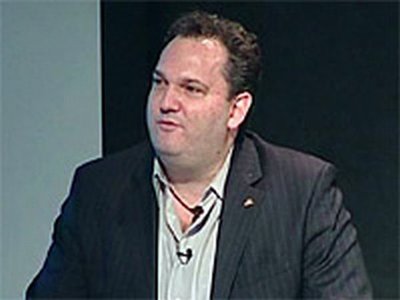May 7, 2009
Pain medicine chief reports on division’s accomplishments
More than 100 UW Medicine faculty members, staff and employees attended an April 29 “State of the Division” presentation by Dr. Alex Cahana, chief of the UW Medicine Division of Pain Medicine. Cahana, who is also a UW professor in anesthesiology, shared the division’s mission, vision and accomplishments to date, and also discussed plans for the future.
UW Medical Center Executive Director Stephen P. Zieniewicz said that the division’s work is consistent with always putting the patient first. He recognized Cahana’s one year on the job, too. “I look forward to your continued success and the passion you bring to everyone in the room,” Zieniewicz said.
What does the “state” of pain medicine look like? Cahana provided seemingly grim but honest background: Pain is the most misunderstood disease, as well as the most undertreated and most difficult disease to manage. People who aren’t in pain medicine don’t understand the topic. “The future of pain medicine depends on us,” said Cahana.
In a nod to the “future” mention, he then presented the division’s first visionary award to Nurse Manager Patricia Ashley, who was instrumental in work to streamline a referral process.
Cahana next painted a picture of what that future will look like. “We are writing the next chapter in pain medicine,” he said. Thanks to the commitment of the university and its medical system, Cahana said there is not any pain center in the world that has as much support. “Everyone is collaborating,” he said, including internal medicine, neurological surgery, neurology, orthopedics, psychiatry, radiology, rehabilitation medicine and surgery. Discussions are in the works to better address cancer pain management (via Seattle Cancer Care Alliance), and the division is talking with leaders at Harborview Medical Center in areas including spine medicine and chronic fatigue.
Cahana said thanks to the division’s work and collaborations, medical providers are learning how to communicate in a different way than they did before. UW Medicine has streamlined the opioid refill process and created a patient registry, for starters. The division is also pursuing ISO 9000 quality management certification. ISO is the International Organization for Standardization, and such standards are implemented by more than one million organizations in 175 countries.
Strategic imperatives outlined by Cahana include to re-establish the reputation of the division throughout the region, nation and the world, and to continue to align all programs—including those at UWMC, Harborview, Seattle Children’s, Veteran’s Affairs of the Puget Sound and SCCA.
Cahana referred to the last year as the “year of courage,” since in many ways it was a year of beginnings, and included forging new relationships. “This year is the year of trust,” he said. “We have to trust our competence, good judgment, and each other. We have to trust the institute not to attribute negativity, and we have to trust our patients — most of our patients simply have pain.” Cahana also reminded attendees to trust in the medical profession. “We’re doing the right thing every day,” he added.



